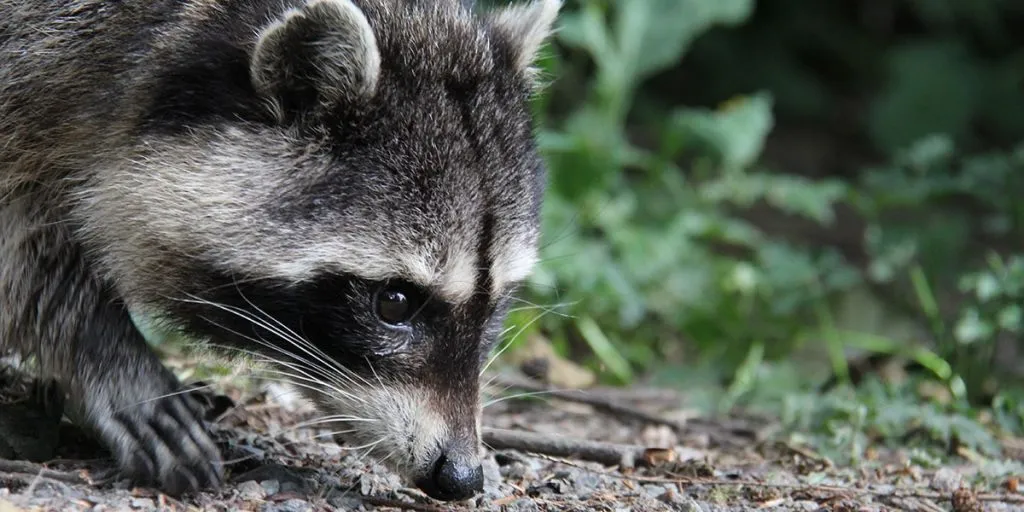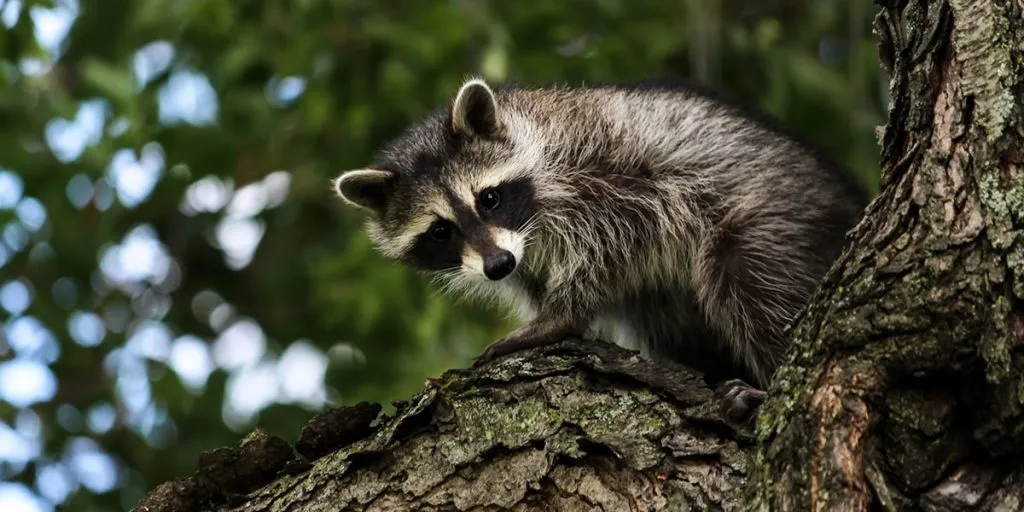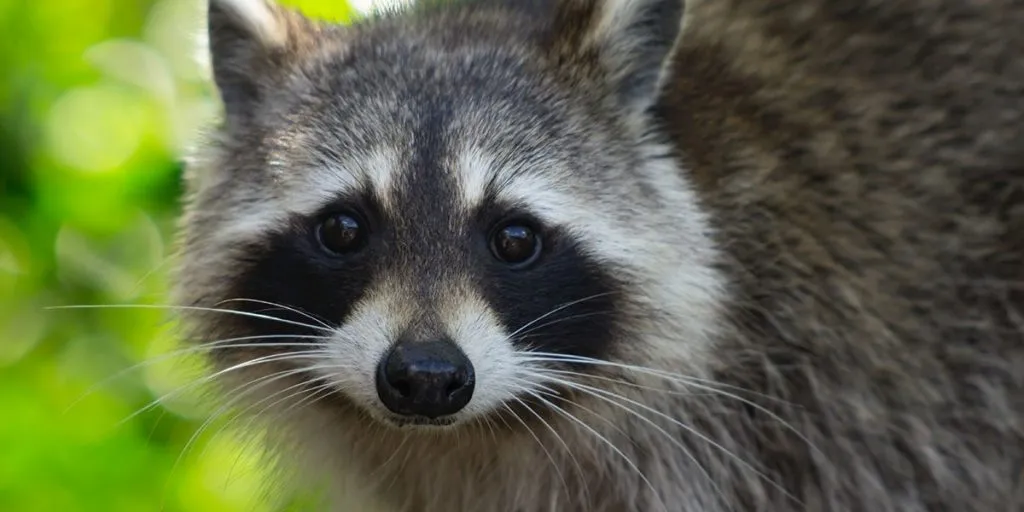Raccoons are omnivores, which means these animals eat about anything they can find. This is problematic for raccoon poop identification, as it can look very different. It all depends on the diet of the animal, but there are some common characteristics that can be identified.
In general, raccoon poop is tubular in shape and will be no longer than 3 inches. The droppings are usually dark brown to black in color. Depending on what the raccoon ate and how old the poop is, the consistency can vary between sticky and clumpy.
Another major factor in how raccoon poop will look is how old it is. If the animal just did its business, the food remains will still be wet. Over time, the sun can cause it to dry out, reduce its odor, and it can cause the tubular shape to fall apart.
Where Do Raccoons Poop?
The most common locations to find raccoon poop is on the base of trees, house roofs, attic floors, tree stumps, large rocks, or similar elevated areas. Most raccoons do not defecate inside their own nests, but will keep coming back to the same location near their nests.
It is therefore quite common to find multiple tubular-shaped droppings from a raccoon concentrated in the same location.
To know if you’re actually dealing with a raccoon (and not any other animals), you’d want to look out for some telltale signs. The next section will explain how droppings can be easily identified, as well as what to look out for.
How To Identify Raccoon Droppings
Raccoon droppings can be found in specific places. However, the diet ultimately determines how the excrements will look. Gather as much information as possible to determine the animal you’re dealing with.
The following steps will help you identify raccoon droppings:
- Determine the location: Raccoons most often do their business in the same location near the base of a tree. Elevated places like roofs, logs, boulders, or similar are also commonly used.
- Look for more clues in the area: See if you can find any fur, tracks, or maybe even food remains in the area. Is there anything that can help you determine the correct animal faster?
- Focus on tubular droppings: Most raccoon poop will be tube-shaped. It’s a lot like human feces, just a lot smaller (1 to 3 inches in length) and with more remains of things they have eaten.
- Look at the consistency: Wildlife will commonly leave clues about their diet within the droppings. Look for remains of small animals, plants, seeds, and cross-reference them with the diet of a raccoon.
- Determine the color: Darker-colored droppings are more common for raccoons, but the range can differ from green-ish to dark-brown.
- Estimate how old the droppings are: The relative wetness will give you information on the age of the droppings. Fresh raccoon poop is still relatively wet and sticky, while raccoon poop that is older will be dried out and clumpy. It can take several hours to days to dry out. This will depend on weather conditions and exposure to the sun.
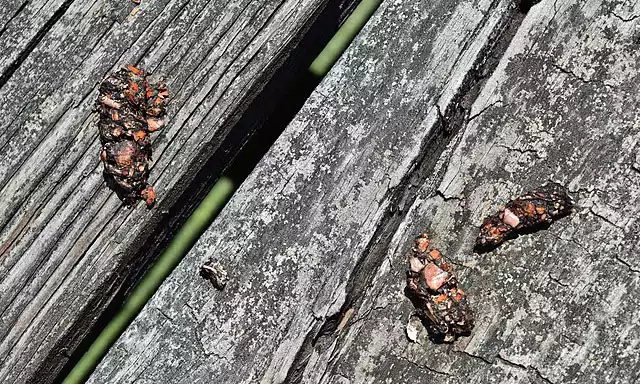
Fresh vs. Dried Raccoon Poop
Once you know you’re dealing with a raccoon, it is important to determine how long they’ve been around. If you find some dried excrements, chances are it’s already been a few days. If the droppings are still fresh, you might even spot the animals after the sun goes down.
The differences between new and old raccoon droppings are easily distinguishable:
- Odor: Fresh poop will obviously have a stronger stinky smell compared to older droppings;
- Wetness: All raccoon excrements start out relatively wet and will dry out within hours (or days if weather conditions are wetter);
- Consistency: Newer droppings will not only be wetter but also stickier. The tubular raccoon turds will eventually slowly fall apart.
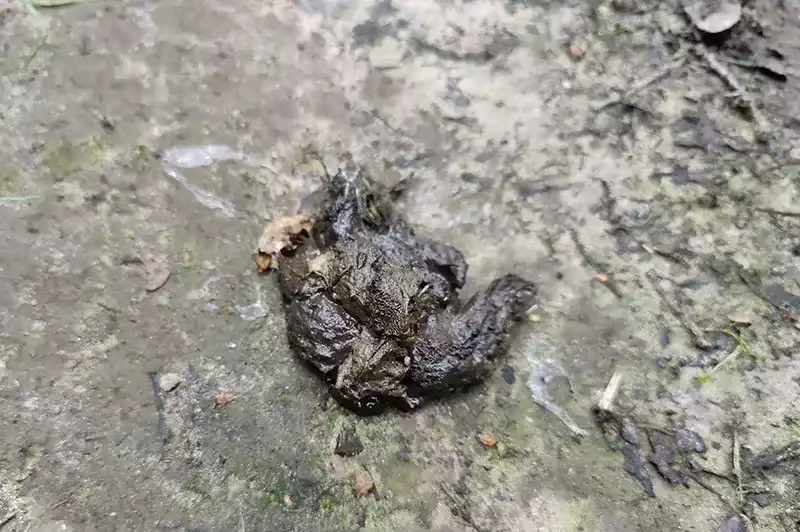
Again, remember that any raccoon dropping will look different based on their health and diet. Raccoons are opportunistic eaters and will eat anything from meat to nuts and greens. Just like humans, your stool might differ over time, based on similar factors.
Refer to the common characteristics in shape, size, color, and consistency to start identifying what animal the droppings might be from. But do it very cautiously without touching, as that can be extremely dangerous to your health.
Why Raccoon Scat Is Dangerous
Interacting with any type of feces is inherently risky, but raccoon scat is especially problematic. Raccoons are carriers of the roundworm Baylisascaris procyonis, of which the eggs are found in raccoon droppings. Raccoon roundworms are dangerous to humans and are known to cause neurological damage and even death.
While the infection is extremely rare (only 30 registered cases since 1980), treatment is almost non-existent and infection is almost always lethal. It most commonly happens to children that ingested raccoon feces in one way or another. The video below provides some more information:
Another risk is the rabies virus, as about 1 in 3 wild raccoons carry rabies. The virus can be passed down from raccoon feces to humans, If left untreated, this virus is deadly as well. Symptoms are mild and may include fever, headache, as well as general weakness and discomfort.
If you have been in contact with raccoon feces, or have touched a surface where raccoon feces have been, you are at risk of infection. Rabies is a preventable disease if shots are taken in time, but when symptoms start to develop, the disease is no longer curable.
Dealing with raccoon poop is therefore inherently risky and should not be taken lightly. Keep children and pets away from potential raccoon droppings in your backyard and remove them immediately. Ingestion could cause roundworm or rabies, even after thoroughly cleaning the surface where the feces have been.

